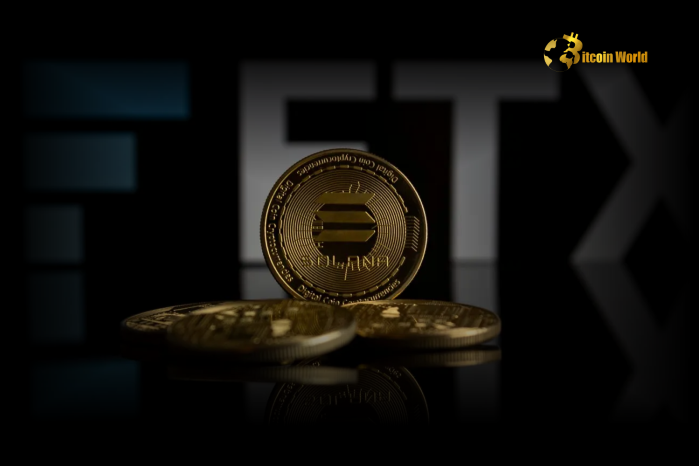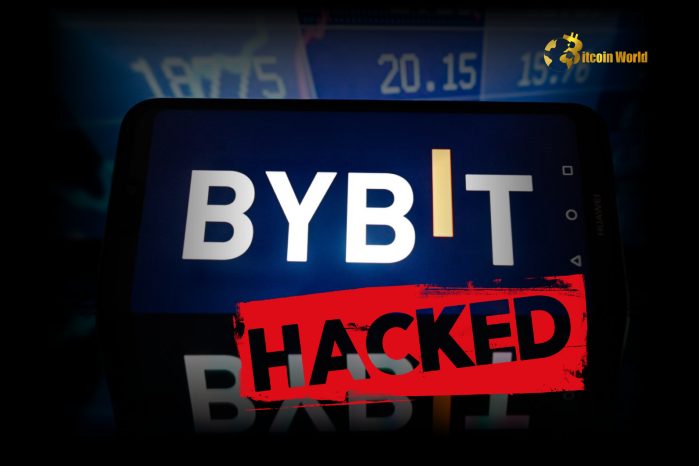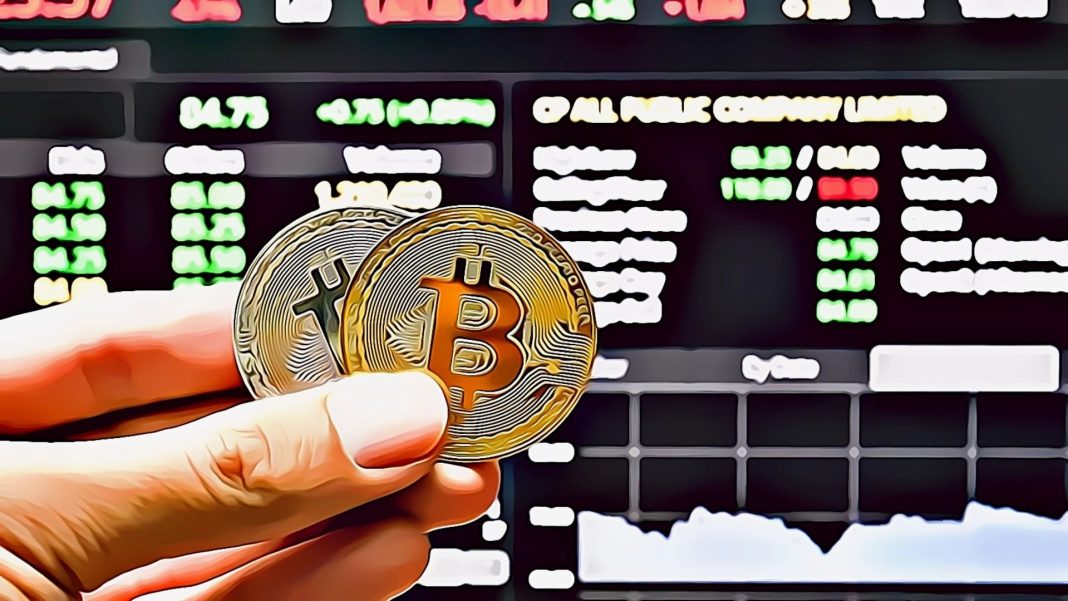
Ethereum faced steep losses Friday after a security breach at Bybit drained an estimated $1.4 billion from the exchange. Ethereum Faces 2.6K Low Following the Hack—Can Recovery Hold? Bybit’s CEO confirmed on Feb. 21, 2025, that the platform lost a large portion of its crypto reserves in the attack, which targeted ETH, mETH and stETH
Bitcoin.com
You can visit the page to read the article.
Source: Bitcoin.com
Disclaimer: The opinion expressed here is not investment advice – it is provided for informational purposes only. It does not necessarily reflect the opinion of BitMaden. Every investment and all trading involves risk, so you should always perform your own research prior to making decisions. We do not recommend investing money you cannot afford to lose.
Extreme Bitcoin DXY Correlation: Is This a Golden Opportunity or a Warning Sign?

Is the crypto market mirroring traditional finance more closely than we think? Recent analysis suggests a fascinating, and potentially critical, relationship between Bitcoin and the U.S. Dollar Index (DXY). According to Jamie Coutts, a respected analyst from Real Vision, the inverse correlation between Bitcoin and the DXY has reached extreme levels. This intriguing development could signal significant shifts in global liquidity and market dynamics, creating both opportunities and challenges for crypto investors. Let’s dive deep into what this means for your crypto portfolio and the broader market. Decoding the Bitcoin DXY Correlation: What’s the Hype? For those new to market analysis, understanding the Bitcoin DXY correlation is crucial. The DXY, or U.S. Dollar Index, measures the dollar’s strength against a basket of six major world currencies. Historically, Bitcoin, often seen as a hedge against traditional financial systems, has exhibited an inverse relationship with the DXY. This means when the dollar weakens, Bitcoin tends to rise, and vice versa. But why is this happening now, and why is it considered ‘extreme’? Jamie Coutts highlighted this unusual situation on X, noting that the current Bitcoin inverse correlation with the DXY is reaching levels rarely seen before. He suggests that while a weaker dollar is generally seen as favorable for risk assets like Bitcoin, political factors are currently exerting influence on the DXY. This creates a complex scenario that demands careful attention from investors. Why is the Inverse Correlation Between Bitcoin and DXY Important? Understanding this correlation offers valuable insights into broader market trends and potential investment strategies. Here’s why this relationship matters: Global Liquidity Indicator: A weakening dollar often signals increased global liquidity. When the DXY falls, it generally becomes cheaper for other countries to borrow and invest in dollar-denominated assets, including cryptocurrencies. Risk-On/Risk-Off Sentiment: A strong dollar often indicates a “risk-off” environment, where investors flock to the safety of the dollar. Conversely, a weaker dollar can suggest a “risk-on” sentiment, encouraging investment in riskier assets like Bitcoin. Investment Strategy Implications: Monitoring the DXY impact on Bitcoin correlation can help investors anticipate potential market movements and adjust their portfolios accordingly. An extreme correlation could indicate either an overextended market condition or an impending significant shift. To illustrate, consider a simplified scenario: DXY Trend Typical Bitcoin Reaction Market Sentiment DXY Decreases (Dollar Weakens) Bitcoin Price Tends to Increase Risk-On DXY Increases (Dollar Strengthens) Bitcoin Price Tends to Decrease Risk-Off Political Factors and the Dollar: What’s Influencing DXY? Coutts points out that political factors are playing a significant role in the current DXY dynamics. This is a crucial element to consider because traditional economic models might not fully capture the impact of geopolitical events on currency valuations. These political influences can include: Geopolitical Instability: Global events, such as conflicts or political uncertainty, can drive investors towards the perceived safety of the U.S. dollar, strengthening the DXY. US Fiscal Policy: Government spending and debt levels can influence investor confidence in the dollar. Aggressive fiscal policies might weaken the dollar over time. Federal Reserve Policy: Interest rate decisions and monetary policy by the Federal Reserve are primary drivers of dollar strength. Hawkish policies tend to strengthen the dollar, while dovish policies can weaken it. These political and economic factors are creating a tug-of-war, potentially contributing to the ‘extreme’ correlation observed. It’s not just about typical market forces; external pressures are adding layers of complexity to the DXY impact on Bitcoin . The Critical Level: 106 on the DXY Coutts specifically mentions the 106 level on the DXY as a critical threshold. He suggests that a drop below 106 would be a “strong bullish signal for global liquidity.” Why is this level so important? Technical Indicator: 106 likely represents a significant support level for the DXY. Breaking below this level could indicate a sustained weakening of the dollar. Liquidity Release: A weaker dollar, as discussed, typically translates to increased global liquidity. This liquidity often flows into various markets, including cryptocurrencies, potentially boosting Bitcoin’s price. Market Confidence: Breaching a key support level can also shift market sentiment. A DXY drop below 106 might instill greater confidence in risk assets and trigger further investment in Bitcoin. Therefore, keeping a close watch on the DXY, particularly around the 106 mark, is vital for anyone involved in the crypto market. This level could act as a key trigger for significant market movements and shifts in the Bitcoin DXY correlation . Navigating the Extreme Correlation: Actionable Insights for Crypto Investors So, what should crypto investors do with this information? Here are some actionable insights based on the current Bitcoin market analysis and the extreme DXY correlation: Monitor DXY Closely: Keep an eye on the U.S. Dollar Index, especially the 106 level. Use financial websites or trading platforms to track its movement in real-time. Diversify Your Portfolio: While Bitcoin shows a strong inverse correlation, diversification remains key. Don’t put all your eggs in one basket. Explore other cryptocurrencies and asset classes to mitigate risk. Stay Informed on Global Politics: Be aware of major geopolitical events and policy changes that could influence the dollar and, consequently, Bitcoin. Use Technical Analysis: Combine DXY analysis with other technical indicators for Bitcoin to make informed trading decisions. Look at Bitcoin’s price charts in conjunction with DXY movements. Manage Risk: Extreme correlations can sometimes revert to the mean. Be prepared for potential shifts in the relationship and manage your risk accordingly. Don’t overextend your positions based solely on this correlation. Is This Extreme Correlation a Golden Opportunity? The current crypto market signals are mixed but intriguing. While an extreme inverse correlation might seem like a straightforward bullish signal for Bitcoin if the DXY weakens, it’s essential to approach with caution. ‘Extreme’ conditions are often unsustainable and can be followed by sharp corrections or shifts in market dynamics. However, this situation also presents a potential golden opportunity. If Coutts is correct and a DXY drop below 106 unleashes significant global liquidity, Bitcoin could indeed see a substantial upward movement. The key is to be prepared, stay informed, and manage risk effectively. This period of extreme correlation could be a time of significant profit potential for those who understand and navigate it wisely. Conclusion: Riding the Waves of Correlation The extreme inverse correlation between Bitcoin and the DXY is a powerful reminder of the interconnectedness of global markets. Jamie Coutts’ analysis highlights a critical juncture where political factors and traditional market dynamics are converging to create unique opportunities and risks in the crypto space. By understanding the Bitcoin DXY correlation , monitoring key levels like 106 on the DXY, and staying informed about broader market influences, investors can better navigate these complex waters and potentially capitalize on the evolving market landscape. The current situation demands vigilance and informed decision-making, but for those prepared, the rewards could be substantial. To learn more about the latest crypto market trends, explore our article on key developments shaping Bitcoin price action. Bitcoin.com

Report: Kaito, SEI, YAP, and Grok Dominate Crypto Trends Amid Market Growth
Data from Santiment shows that Kaito (KAITO), Sei (SEI), YAP (YAP), and Grok (GROK) are leading the discussions on platforms such as X, Reddit, Telegram, 4Chan, Farcaster, and Bitcointalk. This heightened enthusiasm coincides with steady growth in overall crypto market capitalization. KAITO, SEI, and GROK’s Popularity According to Santiment’s February 21 report , KAITO, the native token of AI platform Kaito, is generating significant buzz due to its listings on major exchanges such as Binance, Coinbase, and KuCoin. Crypto enthusiasts are actively discussing its trading activity, price predictions, and ongoing airdrop claims. The project’s features and tokenomics are further fueling excitement, making it one of the most talked-about assets in the community. Additionally, YAP has emerged as a key term in discussions related to Kaito due to its innovative “tweet-to-earn” mechanism. Developed by the AI platform, the YAP leaderboard incentivizes users to post about crypto on social media. After linking their accounts and crypto wallets, individuals can earn points called “Yaps” based on the engagement on their posts. Santiment highlighted that this system has led to the colloquial use of “yap” as a unit of value or transaction within the Kaito ecosystem. On the other hand, SEI has seen heightened attention following Trump-backed World Liberty Financial’s purchase of 547,990 SEI tokens for $125,000, on its way to amassing a $370 million crypto stash. The analysis reveals that this acquisition has started debates about institutional interest in SEI and its potential impact on the broader crypto market. Grok is trending due to its association with Elon Musk’s latest AI initiative, Grok 3. People have been sharing their experiences with the platform’s real-time knowledge, deep search functionalities, and potential impact on the financial advisory space. Users are also comparing its capabilities to other AI models, particularly in the context of crypto and investment strategies. The excitement is further fueled by the project being free to use. More Trending Tokens Other coins on Santiment’s list include Bitcoin (BTC) and Bittensor (TAO). Bitcoin remains a focal point of conversation, with analysts forecasting significant price milestones. Some projections suggest the coin could go back above $100,000 in the near future and break past the $200,000 level by 2027. Discussions on the flagship cryptocurrency are focused on its current trading status, market cap, and external influences, such as U.S. economic conditions, which could impact its price trajectory. Meanwhile, TAO has gained traction following its recent listing on Coinbase. This has led to speculation about its growth potential and optimism surrounding the dTAO launch. There is also talk about its price movements, with many users expressing positivity about its future performance. Analysts suggest that the token could be entering a bullish phase after a prolonged downtrend, adding to the excitement surrounding its market activity. The post Report: Kaito, SEI, YAP, and Grok Dominate Crypto Trends Amid Market Growth appeared first on CryptoPotato . Bitcoin.com











